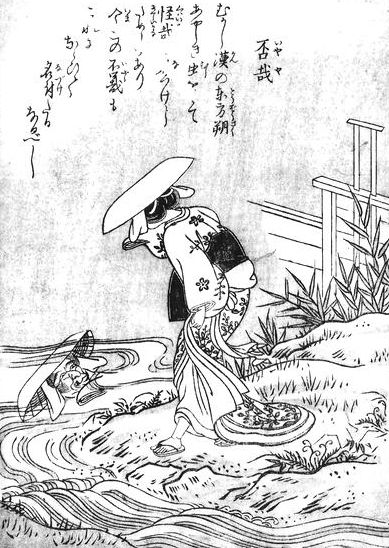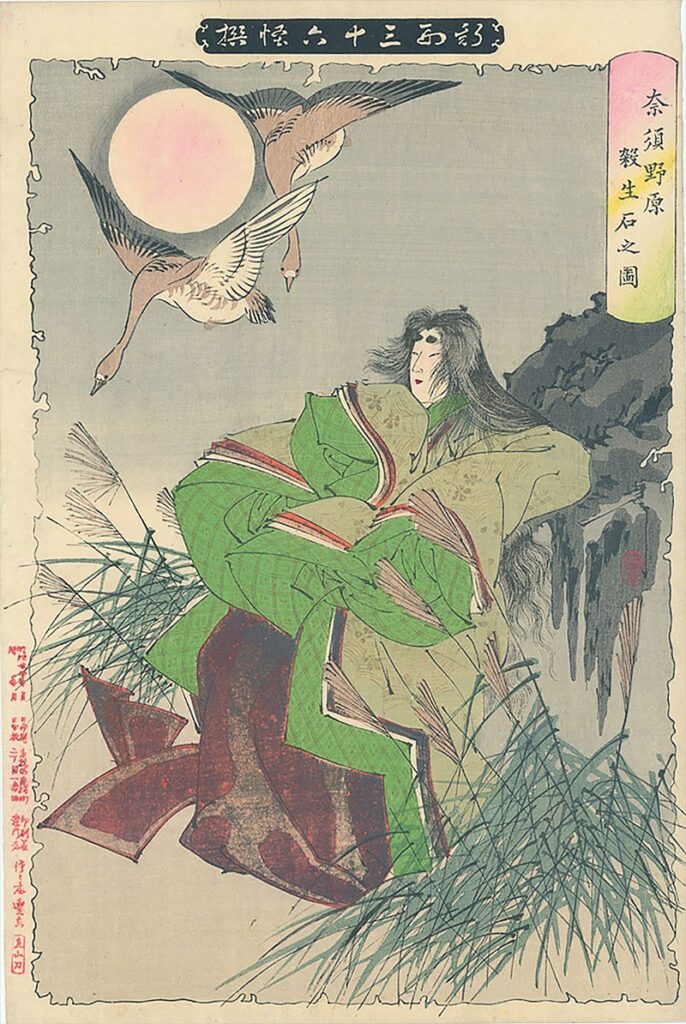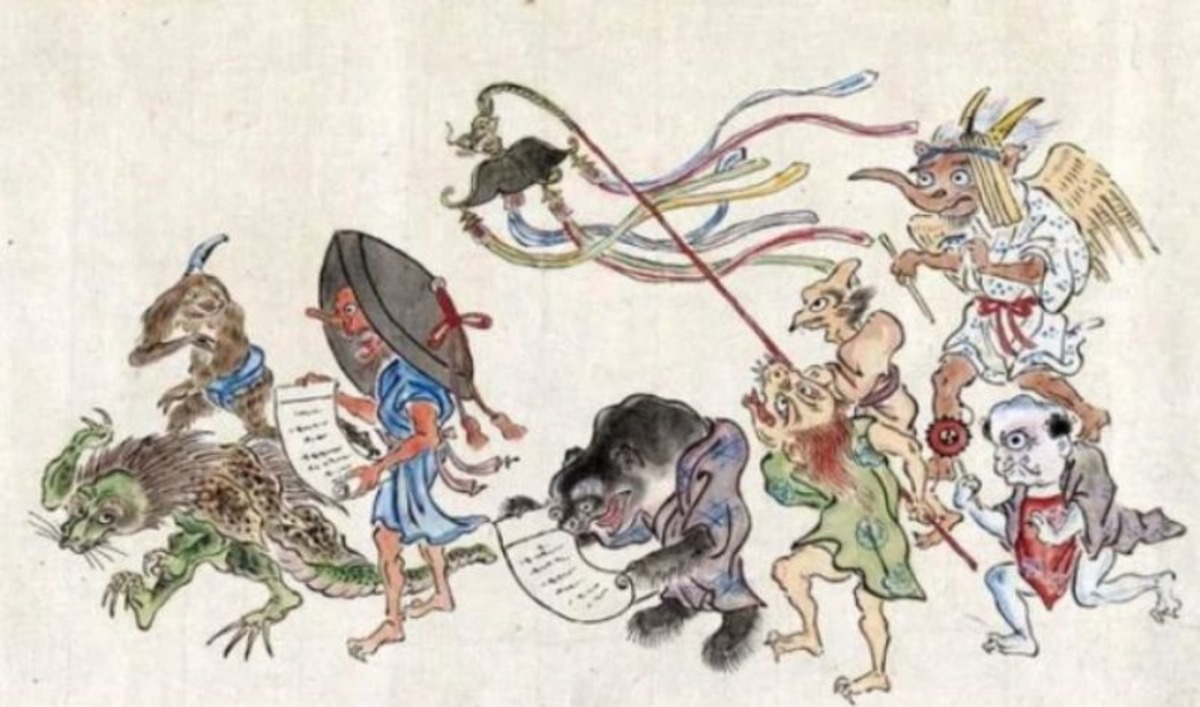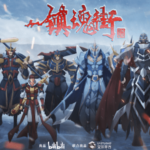It’s often the case that anime and donghua fans’ interests overlap… but we all know that finding information from Chinese sources may get difficult (especially if you don’t speak the language).
The fact that the two cultures have many things in common (being integral to the Sinosphere, the Japanese culture has been heavily influenced by the Chinese culture) is often lost in translation when it comes to pop culture fans.
Being an ethnologist by vocation, I especially like to draw on cultural references and set them in a wider context. In this article, I’d like to bring to your attention 5 curious creatures falling under the category of yōkai (Japanese spirits) or yaoguai (妖怪 for both languages) as they’re known in Chinese.
Note: all images featured in this post are courtesy of Wikimedia Commons.
1. Iyaya (否哉)

Iyaya (literally, “Oh, no!”) is an insect believed to be the reincarnated spirit of an oppressed citizen. Iyaya originates in China, where it was first described by Dongfang Shuo (ca. 160 BCE–ca. 93 BCE), a court official of Han Dynasty China (202 BCE–9 AD, 25–220 AD).
Centuries later, Dongfang-jun’s discovery was recorded in Taiping Guangji (“Extensive Records of the Taiping Era”) compiled in the early Song dynasty (960–1279). Dongfang named it guaizai in Chinese, which literally translates as “How monstrous!” The name was meant as a critique of the Qin Dynasty government.*
*The Qin Dynasty was succeeded by the so-called Eighteen Kingdoms established by military leader Xiang Yu in 206 BCE. In turn, the Eighteen Kingdoms period was succeeded by the Han dynasty.
2. Shokuin (燭陰)

Shokuin (literally, “Torch-Shadow”) is a scarlet dragon with a human face that dwells on mount Shōzan. In Chinese sources, Shokuin is the god of mount Shōzan, which is located somewhere in the “northern seas.”
Shokuin is described in The Classic of Mountain and Seas (a Han Dynasty collection of Chinese mythology under the name “Torch-Dragon.” The source reads:
“When this deity closes its eyes, there is darkness. When the deity looks with his eyes, there is light… The deity shines his torch over the ninefold darkness.”
Shokuin is a male deity and is often depicted sporting a beard, for the sake of clarity.
3. Hōsō-shi (方相氏)

Hōsō-shi appears during oni-yarai ceremonies. He wears his court robes and “stands on the eastern steps.”
An oni-yarai is a ritual performed to drive away “pestilential influences.” Traditionally held in the Imperial Palace on New Year’s Eve in Japan, the date shifted to the eve preceding the first day of spring over the centuries.
Oni (鬼) stands for a sort of demon in Japanese folklore, not to be confused with the Christian representation of demons and devil. Oni-yarai later evolved into an annual tradition called setsubun, which sees people scattering beans to rid their houses of oni and other troublesome creatures.
Hōsō-shi originates in China, where it is known as Fangxiang shi (lit., “exorcist”). The latter is described in the Analects of Confucius. In the 2nd-century text Rites of Zhou, it is written:
“Fangxiang shi covers himself with bearskin, a mask having four eyes of gold, a black upper garment, and a lower vermillion garment.”
He is equipped with a halberd and a shield and traditionally leads “functionaries” in the seasonal Nuo (“great exorcism”) ritual.
4. Ninmenju (人面樹)

Ninmenju (lit. “human-face tree”), also known as Jinmenju, is a tree growing in canyons. True to its name, its blossoms take the form of human heads. The heads keep laughing, but they cannot speak.
Ninmenju has an equivalent in Arab myths. Namely, the “Waq-Waq Tree”, mentioned in One Thousand and One Nights, also bears human-shaped fruits.
Indeed, the first mention of Ninmenju claims that the creature originates in Daishi-koku (the Islamic world). The description was published in the early 17th century in a Chinese leishu encyclopedia titled Sancai Tuhui, compiled by Wang Qi.
5. Tamamo-no-mae (玉藻前)

Tamamo-no-mae, often pictured as a nine-tailed fox, is a legendary yōkai stemming from Chinese sources.
The source that first mentions her is titled Langye’s Substitute of Drunkenness: a Compilation (original title: Langye Dai Zui Bian) by Zhang Dingsi, known in Japan as Rōya Taisui Hen. Published in the 16th century during the reign of the Ming dynasty, the source features multiple stories about Tamamo-no-mae, “one of the most powerful and dangerous creatures ever to stalk the Japanese islands.”
Toriyama Seiken states that:
“Daji, the favorite concubine of King Zhou of Shang, was a fox spirit. She flew across the waters to Japan to become Lady Tamamo-no-mae, polluting the Emperor with her presence. Dazzling all with her feminine charms, she is far more dangerous than any fox or tanuki.”
Note that different sources depict Tamamo-no-mae with varying numbers of tails. Namely, it is typical for yōkai to grow additional tails as they age and become more powerful. Nine-tailed creatures are at the peak of their power and are truly terrifying.
Spotted Any Yaoguai in Your Favorite Donghua Series?
Have you come across some Yaoguai in your favorite donghua series? I’m sure you must have. Drop a line in the comment section below and participate in expanding the topic.
I’ve mentioned just 5 of the picturesque spirits here, but do stay tuned for future installments.



